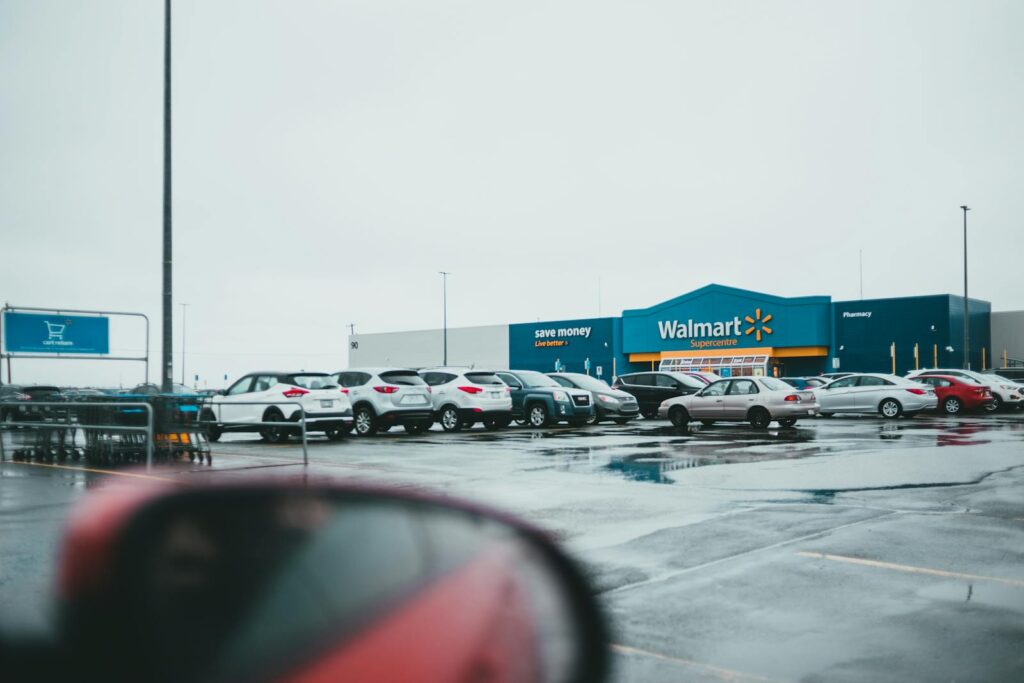
Walmart Albuquerque Closure Storm: Collision of Profit Dilemma and Community Pain Points
Let’s dive into a story that’s unfolding in Albuquerque, New Mexico, a situation that highlights some of the big challenges facing retail giants like Walmart and the communities they serve. Walmart, one of the biggest names in retail globally, recently announced the closure of several stores across the United States, and one of those is right there in Albuquerque.
The company cites a mix of reasons for these closures, primarily pointing to stores that aren’t meeting their financial expectations. They’ve been dealing with operational hurdles, including rising crime rates and issues with theft, which they say have impacted their bottom line. It’s a complex picture, balancing the need for profitability with the realities on the ground.
Walmart officials have stated that these decisions aren’t made lightly. They follow a thorough review process, and while their overall business remains strong, some specific locations just haven’t performed as hoped. They emphasize that there’s no single reason for a store closure; it’s based on several factors, including historical and current financial performance, aligning with their strategy to close underperforming spots. They also want folks to know they still have a strong presence in the area, mentioning thousands of associates employed nearby and many other stores within a 20-mile radius, plus their online options.

The Hollowed ‘Living Hub’: Food and Medicine Shortage Crisis in Low-Income Communities
However, for the people who relied on the closed Walmart Supermarket at 301 San Mateo Blvd., the impact is significant and very real. Residents in the Albuquerque community have voiced deep concern and disappointment. This store wasn’t just a place to shop; for many, it was a crucial lifeline, particularly for low-income families or those without easy access to transportation, providing affordable groceries, household items, and other necessities.
Resident Laurie McCann, a frequent visitor, shared how it was evident that this particular Walmart served “a special group of people who obviously really needed affordable food and drugs.” She stressed, “We really do need a place that provides food and pharmacy.” Another resident, Ivan Villars, described the area as a “food desert,” pointing out that alternative stores like Sprouts or Whole Foods are available but are “considerably more expensive” and simply don’t cover the “basic needs that they got from Walmart.” It’s clear this closure has left a void in the community.
Beyond the immediate loss of goods, there’s worry about what happens next with the now-vacant building. Residents like Ivan Villars are concerned that the empty space could become a problem, saying, “if not filled, it is going to just be derelict building. It’s going to bring crime and things into that area, which nobody wants.” He added that it could easily become “a hub for squatters, a hub for drug use, all of these things because it’s a big unused space.” The community is definitely looking for proactive solutions.
Community members haven’t been silent; they’ve been actively engaging with city leaders, requesting that the vacant building be replaced with something that genuinely serves their needs – perhaps even a “one-stop shop.” Meetings have been held, and residents are asking for transparency and a commitment from the city to continue listening to their priorities for redevelopment in the area. The city has responded, stating they “will continue to work with the community to hear what their priorities and needs are for redevelopment in the area, whether it be the Walmart property or the International District in general.” There are hopes for future meetings to discuss specifics like budget, quality of food, and financing, emphasizing the desire for healthy, affordable options, maybe even organic produce, which the San Mateo Walmart apparently offered and was appreciated.

Ruins or Rebirth? Community Game over Vacant Property Redevelopment
From a broader financial perspective, Walmart’s move is aimed at cutting losses from locations struggling with high crime and low profit margins. By closing these stores, they can focus resources elsewhere, potentially improving overall financial health. However, this also means job losses, which the Bureau of Labor Statistics highlights as crucial to local economies. These job losses aren’t just hard on the affected employees but can ripple outwards, reducing consumer spending and economic activity in the area. The closure could also mean less foot traffic, impacting other businesses that relied on the Walmart customer flow, potentially contributing to a local economic downturn.
The city of Albuquerque is reportedly facing its own challenges regarding the property, with Walmart selling the vacant building for approximately $10 million. The city has acknowledged it currently lacks the full funding to purchase the property, although they did receive $2 million from the state’s capital outlay in 2023 for redevelopment in the area, which could potentially go towards the property. It’s a complex puzzle involving corporate strategy, community needs, and local government resources.
This situation in Albuquerque is part of a larger pattern. Walmart has announced other closures recently, including stores in San Francisco, Portland, and other states like Illinois, Wisconsin, and Florida. These closures come as many retailers are facing increased pressure from factors like inflation and the shift towards online shopping, trends sometimes referred to as the “retail apocalypse.” Walmart’s CEO, Doug McMillon, has publicly addressed the issue of theft, stating, “Theft is an issue. It’s higher than what it’s historically been,” adding that if not corrected, it could lead to higher prices or stores closing. This highlights the difficult decisions retailers face in balancing security costs, profitability, and community access.
Read more about: San Francisco Downtown Fights for Future as Retail Exits, Office Vacancies Soar, and Business Costs Rise

Walmart is trying to navigate these challenges by implementing various security measures and investing in other areas to enhance the shopping experience and store performance, including upgrades, e-commerce expansion, and new technologies. Their strategy involves prioritizing profitable locations while trying to maintain safe environments. The closures are a significant consequence of these complex factors, impacting both the company’s financial model and the daily lives of people in affected neighborhoods.
Read more about: San Francisco Downtown Fights for Future as Retail Exits, Office Vacancies Soar, and Business Costs Rise
As communities like the one in Albuquerque grapple with the fallout from losing a major retailer, the story continues to unfold. It’s a vivid illustration of the intricate relationship between large businesses and the local areas they serve, and the ongoing search for sustainable solutions that can meet the needs of both residents and retailers in a rapidly changing economic landscape. Watching how the community and city leaders work together to reimagine the space and address the needs for affordable goods and safety is certainly something to follow.
Related posts:
Walmart Closes Three Stores Amid Rising Crime and Financial Struggles
Albuquerque Walmart closure affects community, residents
Walmart Defeated by ABQ War Zone



